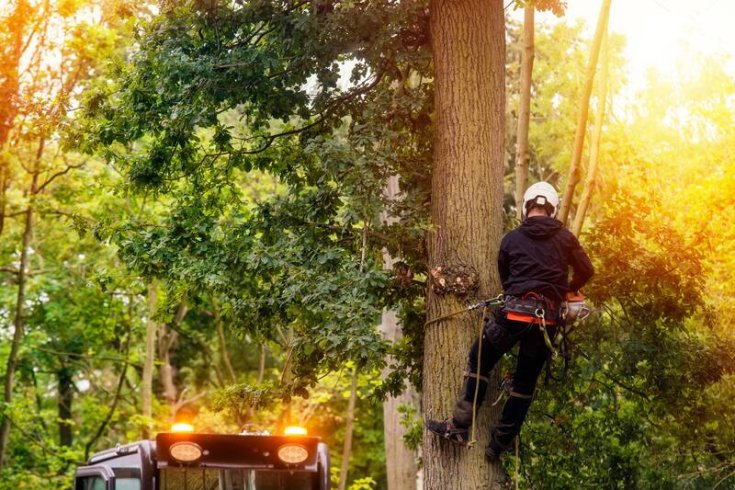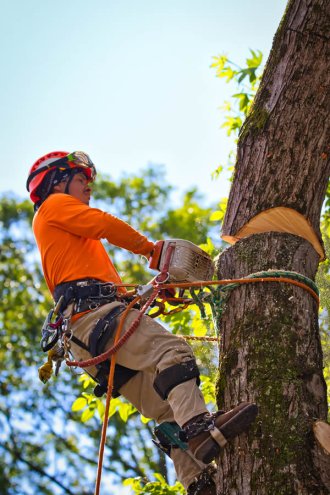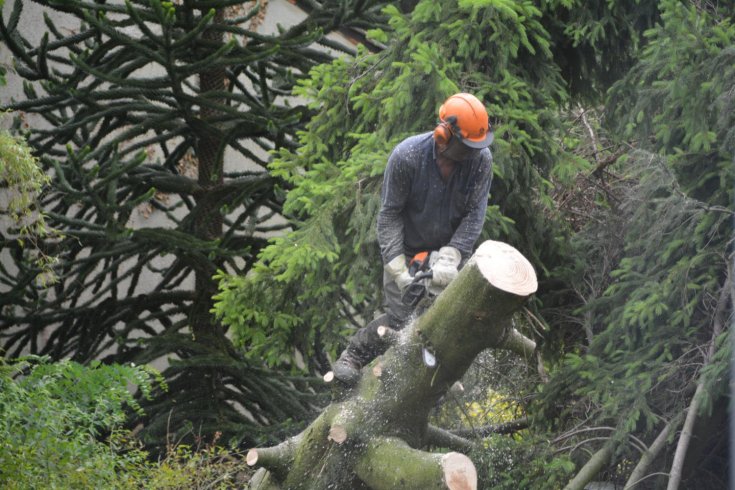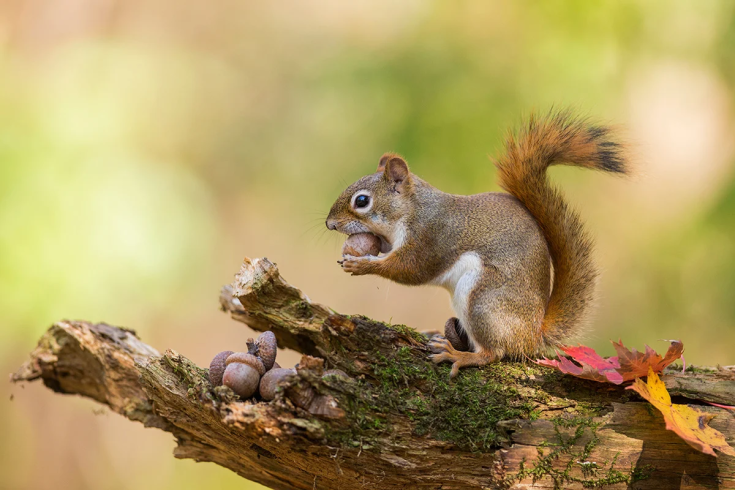Menu
Trees are magnificent entities that play a vital role in our environment. Despite the many benefits, from offering shade beauty to oxygen, many trees develop holes, causing concerns about their health and safety. If you are wondering whether holes in your trees are dangerous, the arborists from Driscoll Tree Service can help. Let's explore the causes and impacts of holes in trees to help you better understand their effects and take the proper action.

Holes on trees are not an unfamiliar phenomenon, as most don't show deterioration. Still, a comprehensive inspection by a tree service expert can determine the cause, severity, and solution.
Natural decay is one of the most common causes of holes in trees. As trees age, heartwood and other parts decay. This decline creates hollow spaces within the tree. While some trees can live with these hollows for many years, they can become structurally compromised over time. This may lead to safety hazards, property damage, or tree removal emergencies.
Insects like beetles and termites can bore into trees, creating holes. These pests usually target weakened or stressed trees, accelerating the decay process. The holes they make can vary in size but often cause further structural issues if left unattended. If you suspect an infestation, schedule an inspection with professional tree service providers.
Severe weather, including high winds, lightning, and heavy rain, can cause physical damage to trees. Branches may break off, or trunks may crack, leaving holes. These openings expose the tree to further harm from the elements and potential infestations.
Human activities can create holes, such as improper pruning, nailing objects into trees, or mechanical damage from lawn equipment. These injuries often provide entry points for diseases and pests, exacerbating the damage over time. Routine checks by a trusted tree care company can ensure physical damage doesn’t affect tree health and longevity.
Impact of Holes on Trees
Now that you know some of the common causes of holes in trees, understanding their effects can ensure you make informed maintenance decisions.
Structural Weakness
As mentioned, holes in trees can cause significant structural weakness. Depending on their size and location, they can compromise the tree's ability to support its weight, making it more susceptible to breaking during storms or under heavy snow. This structural compromise risks nearby structures and individuals, prompting emergency services like pruning or complete tree removal.
Openings created by holes serve as entry points for diseases. Fungal infections, in particular, can spread rapidly within a tree, causing further decay and weakening. These infections often go unnoticed until significant damage has occurred, making them challenging to manage. That's why routine checks and visits by a tree care company are vital for early prevention and treatment.
Curb appeal is a significant concern for most property owners. With that in mind, holes in trees can detract from their appearance, especially in landscaped areas. If you notice large or many holes in your trees, it affects your landscape's aesthetic appeal and overall beauty.
Holes in trees can have various causes and impacts. While some holes are a natural part of a tree's life cycle, others result from damage or disease and can compromise the tree's health and safety. Understanding the causes and effects is crucial for effective tree management and ensuring the longevity of these vital organisms. Contact us at the Driscoll Tree Service to schedule regular inspections with our arborists. We can help you preserve your trees' beauty and structural integrity.


Is it Possible to Minimize Storm Damage to Trees? Trees play a critical role in our environment, providing many benefits like shade, oxygen, and beauty to our landscapes. However, they can also be vulnerable to the destructive forces of nature,…
Read More
Everything You Need to Know About Residential Tree Clearing Trees provide a range of benefits for your property and the ecosystem. However, there are instances clearing is vital to mitigate safety hazards and costly damages in the future. Before hiring…
Read More
Hey there, Metro Atlanta neighbors! Whether you’re battling Bradford pears that shed like a husky in July or nurturing a century-old oak that’s seen more history than Peachtree Street, the tree care specialists at Driscoll Tree Service have some tips…
Read More
How Professional Tree Services Handle Large or Hazardous Trees Large or hazardous trees can quickly turn into serious threats on your property, and dealing with them safely requires far more than basic yardwork. You might look at a towering trunk,…
Read More
How Proper Tree Care Can Support Wildlife Trees are magnificent additions to any landscape and the environment. Like most living things, proper care and maintenance go a long way to enhance aesthetics, health, and longevity. A healthy tree provides shelter…
Read More
Seasonal Tree Care Tips: Summer Edition As summer kicks into full gear, trees in your yard require special attention to stay healthy and vibrant. As a trusted tree care company, Driscoll Tree Service provides routine inspections and maintenance to protect…
Read More
Are Exposed Tree Roots Bad? Exposed tree roots might look like an enchanting natural feature, but those gnarled “wooden serpents” at your feet are more than just a quirky accent of your tree. In fact, roots surfacing above the soil…
Read More
The Hidden Dangers of Bagworms Bagworms are a type of moth larvae that can wreak havoc on trees and shrubs, causing severe damage and premature tree removal projects. Despite their small size and discreet appearance, these pests pose hidden dangers…
Read More
Facts About Winter Tree Planting Planting trees is a major decision that requires consideration of crucial factors like planting time, soil quality, tree type, and tree placement. While most people often avoid landscaping projects during the cold months, winter is…
Read More
5 Signs of Tree Problems Trees are an important part of our lives; one we can’t live without. This is why it’s crucial to take care of our environment. Sometimes you can tell when a tree is ill or dying…
Read More